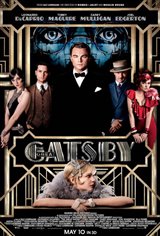F. Scott Fitzgerald
F. Scott Fitzgerald, an American author of novels and short stories, was born on September 24, 1896 in St. Paul, Minnesota. He was raised in an upper-middle class family by parents Mollie McQuillan and Edward Fitzgerald. His family lived in Buffalo, New York until his father lost his job and they moved back to Minnesota. Back in his birthplace, Fitzgerald attended the St. Paul Academy until he was sent to the Newman School in New Jersey, a Catholic prep school. There he met Father Cyril Webster Sigourney Fay, an influential teacher who encouraged Fitzgerald to pursue his writing aspirations. After leaving Newman, Fitzgerald attended Princeton University for a time but although he was incredibly intelligent, he focused all of his efforts on his writing and not on his schoolwork.
After an unsuccessful and incomplete academic career, Fitzgerald left Princeton in 1917 to join the army and in 1918 he was assigned to Camp Sheridan in Montgomery, Alabama. While there, he met and fell in love with the young Zelda Sayre, the daughter of an Alabama Supreme Court judge. He never saw action in the war and when it was over it, he asked Zelda to marry him. She agreed and Fitzgerald moved to New York to try and make a living by writing. Much to his disappointment Zelda called off the engagement because she thought he wouldn’t be able to support her. In 1919, he quit his job in New York and moved back to his hometown to write.
A year later, Fitzgerald published his first novel, This Side of Paradise, for which he received critical acclaim. The book sold well and Zelda was impressed by his sudden success. They were married in 1920 and their only child, a daughter named Frances Scott Fitzgerald, was born October 26, 1921. During Zelda’s pregnancy, Fitzgerald was hard at work on his second novel, The Beautiful and Damned, which was published in 1922 and shortly after, made into a movie. When their daughter was one, the Fitzgeralds moved to Great Neck, Long Island where they lived next to wealthy neighbors and frequently attended parties, similar to those described in his novels. It was here that the story of The Great Gatsby first took shape. A few years later, they moved again, this time to France.
Fitzgerald published The Great Gatsby in April 1925 and quickly sold the stage and movie rights, although the sales for the book weren’t as high as he expected. The book, which takes place in 1922, is narrated by Nick Carraway, a bonds salesman, who moves to West Egg on Long Island next door to the wealthy and ambitious Jay Gatsby. Gatsby is determined to reignite his relationship with Nick’s cousin Daisy, his young love, who is married to East Egg resident Tom Buchanan. The book follows the dramatic events in the community and harshly depicts the lifestyle of the wealthy during the Roaring Twenties.
The Great Gatsby contains parallels to Fitzgerald’s own life—his desperation to please Zelda, for example, is similar to Gatsby’s desperation to win back Daisy. In the book, Fitzgerald accurately describes the social world of the wealthy families on Long Island during the time he lived there. His own status and behavior as “new money” in Long Island is mirrored by Gatsby’s. The drinking, revelling, and opulence of the party scene he frequented with Zelda is also the same world that Nick Carraway enters upon his arrival on Long Island.
It was the couple’s extravagant, Gatsby-like way of life that spelled their eventual downfall. During the early part of their marriage, Fitzgerald and Zelda lived like celebrities and were heavily influenced by the party scene in the United States and France. Fitzgerald was often drunk; Zelda was often flirtatious. In France, Fitzgerald famously became friends with writer Ernest Hemingway, who didn’t like Zelda and thought she was a hindrance to Fitzgerald’s writing career. Their lifestyle left the couple in constant financial trouble and the money Fitzgerald made from his novels quickly began to disappear. Once again, he took to writing short stories for magazines to keep their finances in check. Matters weren’t helped by his drinking, which led to bouts of violence and countless arguments. Despite their troubles, F. Scott and Zelda remained married and moved back and forth between the States and France in an attempt to chase success.
In 1930, Zelda suffered a mental breakdown and was diagnosed with schizophrenia. By 1932, she was hospitalized on and off, usually after a breakdown, for steadily longer periods of time at different institutions near her constantly-moving family. Fitzgerald’s health was no better; as a result of his lifestyle, he had two heart attacks in the 1930s. In spite of that, Fitzgerald was able to release his fourth novel, Tender is the Night, which was published in 1934. During the 1930s, he also attempted to write for Hollywood, a career bid which ultimately failed. Fitzgerald died of a heart attack, with a fifth novel unfinished, on December 21, 1940 at the age of 44.
Although The Great Gatsby didn’t sell well when it was first released, by the 1960s it became Fitzgerald’s most popular piece of work and was widely considered a classic. The respect as a writer that he sought during his life came to him after he passed away. The book is now widely studied and has been frequently adapted for stage, film, and television. The first adaptation of the book was for a 1926 film, now lost, starring Warner Baxter, Lois Wilson, and Neil Hamilton. It was adapted for the screen again in 1949 and, perhaps most famously, in 1974 with Robert Redford as Jay Gatsby and Mia Farrow as Daisy. A television movie, starring Paul Rudd as Nick Carraway, was released in 2000. Buz Luhrmann directed the latest version of The Great Gatsby (2013) starring Leonardo DiCaprio as Gatsby, Carey Mulligan as Daisy, and Tobey Maguire as Nick Carraway.
